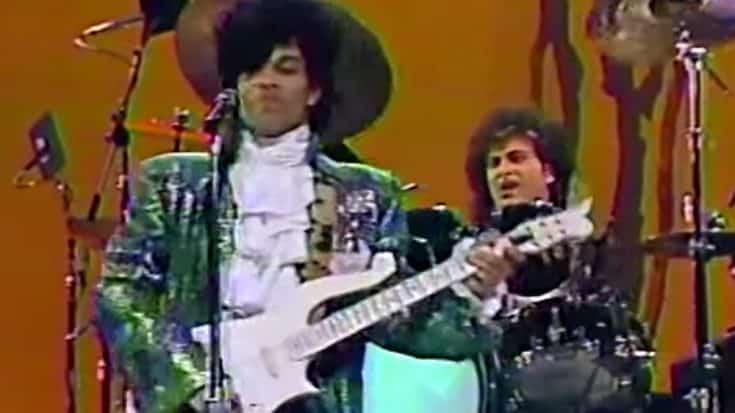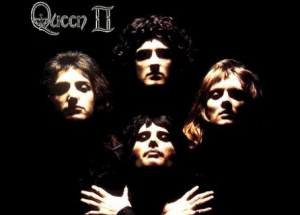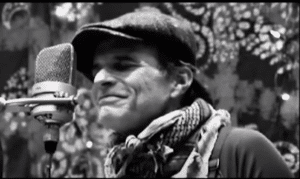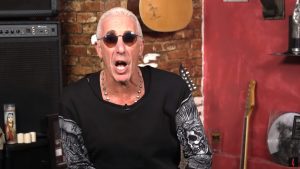The Stories Behind 5 Iconic Rock Instruments

Youtube @ArielTheRacc
It’s safe to say that without the electric guitar, the 20th-century music landscape could have been considerably less exciting. After the decline of the jazz movement, it became evident that the electric guitar had supplanted the horn section as the most dynamic musical instrument. This shift opened up a prominent stage for some of the most skilled guitarists to step into.
With the rise of rock and roll, the electric guitar gained widespread popularity and underwent numerous stylistic evolutions and innovations since Charlie Christian, the pioneer guitar virtuoso, first wielded the instrument.
From that point onward, rock music has been largely defined by its guitarists and their iconic guitars. Here are five of the most memorable ones.
5 – Eric Clapton’s ‘Blackie’
Among the array of guitars Eric Clapton has played during his extensive and illustrious career, the one that stands out as the most iconic is undoubtedly his well-worn black Fender Stratocaster, famously known as “Blackie.” It bears the marks of chips, scratches, and cigarette burns.
To determine its model year will leave one scratching his head. You see, there’s a reason why Clapton himself calls it a “mongrel” guitar.
In the early 1970s, Eric Clapton was in search of a new guitar. He had a preference for the Fender Stratocaster, and at that time, he had several vintage Stratocasters in his collection. He decided to create a custom guitar by combining the best parts of his various Stratocasters.
View this post on Instagram
The legendary guitarist chose a 1956 Sunburst Fender Stratocaster body and paired it with a 1957 neck, which he obtained from a guitar shop in Texas. He then took the pickups from a 1954 Stratocaster and assembled these components to create his dream guitar.
Blackie went through some modifications to suit Clapton’s playing style. He replaced the original pickups with ones from a different vintage Stratocaster for better tone and adjusted the wiring for a unique pickup configuration. He also removed the tremolo arm and filled the associated holes.
USAGE AND PERFORMANCES
Blackie became Clapton’s primary stage and studio guitar for many years. He used it extensively during the 1970s and 1980s, including iconic performances like the Slowhand album.
Clapton was also known to have recorded his famous covers of “Cocaine” and “I Shot The Sheriff” using Blackie.
INFLUENCE AND LEGACY
In 2004, Clapton decided to retire Blackie from regular use due to concerns about its condition. The constant wear and tear from years of playing had taken its toll.
He auctioned off the guitar to benefit his Crossroads Centre, a drug and alcohol addiction rehabilitation facility. Blackie fetched an astonishing $959,500 at the auction, making it one of the most expensive guitars ever sold.
Blackie remains one of the most iconic guitars in rock history, symbolizing Clapton’s virtuosity and influence as a guitarist. While he no longer plays it regularly, Clapton’s connection to Blackie will always have a place in the hearts of music fans worldwide.
4 – Prince’s ‘Cloud’
Prince was an unconventional rock star, and one of the factors contributing to his enigmatic persona was his distinctive style, which extended to his unique preferences in musical instruments. Whether it was the Hohner Mad Cats or his more flamboyant creations like the ‘Symbol’ and ‘C-model’ guitars, he consistently opted for the unexpected and non-standard.
Yet, amidst his eclectic collection, there is one custom guitar that truly stands out from the rest—a bespoke instrument that made its debut in the movie “Purple Rain” and would go on to become perhaps his most iconic and cherished guitar, coinciding with the global phenomenon that the film and its accompanying album became—The Cloud.
View this post on Instagram
The Cloud guitar was designed and built by a luthier named Dave Rusan. Rusan was commissioned by Prince in the early 1980s to create a guitar that would not only sound great but also match his flamboyant stage presence and unique style.
The Cloud’s design is unlike traditional guitars. It has a distinctive, asymmetrical body shape that resembles a cloud or a lightning bolt. The body was made of curly maple, and it featured a blue finish with gold hardware. The overall design was highly unique and befitting of Prince’s eccentric image.
USAGE AND PERFORMANCES
The Cloud guitar gained prominence during Prince’s “Purple Rain” era. It was prominently featured in the movie and on the album cover of Purple Rain. This association further solidified the guitar’s status as an iconic symbol of Prince’s career.
Prince used the Cloud guitar extensively in his live performances throughout his career. It became one of his signature instruments and was known for its bright, twangy tone. Prince was known for his virtuoso guitar skills, and the Cloud guitar played a central role in his electrifying performances.
INFLUENCE AND LEGACY
Over the years, Prince had several variations of the Cloud guitar made, including different colors and sizes. Each of these guitars was unique and contributed to the mystique of Prince as a musician and performer.
After Prince’s passing in 2016, the Cloud guitar remains a cherished symbol of his musical legacy. It is a testament to his artistry, innovation, and the boundary-pushing nature of his music.
The Cloud guitar has become highly sought after by collectors and fans. It occasionally comes up for auction, and one of Prince’s original Cloud guitars sold for a significant sum after his death, reflecting its status as a coveted piece of music history.
3 – Jimmy Page’s double-neck Gibson EDS-1275
Being one of the most legendary guitarists in history, it’s truly remarkable how Jimmy Page came to possess many of his iconic guitars. Surprisingly, some of these legendary instruments didn’t initially belong to or were formally owned by Page.
Take, for example, the Fender Telecaster that was left behind by Jeff Beck when he departed from The Yardbirds. Page took ownership of it and adorned it with psychedelic colors, using it prominently on the first Led Zeppelin album.
Then there’s the iconic Gibson Les Paul, which became Page’s primary stage and studio guitar from Led Zeppelin II onward. Interestingly, Page didn’t purchase this six-string either; it was a gift from Joe Walsh, the leader of James Gang and a future Eagles member.
However, Page wasn’t solely reliant on the generosity of others. He also acquired a couple of backup Les Pauls in case his main guitar experienced string breakage or technical issues. Nevertheless, when it comes to one of Page’s most famous guitars, the purchase was entirely pragmatic.
This was because Page faced a unique challenge during the recording of ‘Stairway to Heaven’—he needed both a six-string and a twelve-string guitar, switching between them within the same song. Carrying two different guitars onstage would have been unwieldy, prompting Page to discover an ingenious solution: the double-neck Gibson EDS-1275.
View this post on Instagram
The idea for the double-neck guitar came to Page while he was with The Yardbirds. He was looking for a way to seamlessly switch between a 12-string guitar and a 6-string guitar during live performances without having to switch instruments.
Page collaborated with Gibson to create his dream double-neck guitar. The result was the iconic cherry-red Gibson that has set up the legendary guitarist for some of the most awesome onstage photos in rock history.
USAGE AND PERFORMANCES
The most famous use of the double-neck guitar was during Led Zeppelin’s performances of “Stairway to Heaven.” The song has a section that transitions from a 6-string acoustic to a 12-string electric guitar, and Page used the double-neck to seamlessly switch between the two parts. This became a defining moment of Led Zeppelin’s live shows and solidified the guitar’s status as an iconic rock instrument.
While “Stairway to Heaven” is the most famous example, Page used the double-neck for other songs as well, such as “The Song Remains the Same” and “Rain Song.” The guitar allowed him to cover a wide tonal range without changing guitars mid-song.
INFLUENCE AND LEGACY
The iconic double-neck guitar has been closely associated with Jimmy Page and Led Zeppelin’s music.
As an iconic symbol of rock music that is instantly recognizable to fans all over the world, it was no wonder that the use of the double-neck, which was initially something of a novelty only, has inspired many other musicians to adopt similar instruments for their own performances. It has also led to the creation of replica models and signature editions by Gibson.
Even after his time with Led Zeppelin, Page continued to use the double-neck guitar in various projects, including his solo career and collaborations with other artists.
2 – Jimi Hendrix’s ‘Monterey Stratocaster’
It is quite possibly the most iconic image of Jimi Hendrix, captured in a ritualistic pose as he kneels over a sacrificial Stratocaster, beckoning the flames to rise, intermittently adding more Ronson lighter fluid to the blazing pickguard.
In an era where one-upmanship and grabbing headlines sometimes took precedence over musicianship, Hendrix was determined to outshine his guitar-smashing counterpart, Pete Townshend. Records indicate that Hendrix indeed executed this act twice, with at least three guitars intertwined with these remarkable stories.
View this post on Instagram
USAGE AND PERFORMANCES
The story of the famous “Monterey Stratocaster” transpired at the Monterey Pop Festival, which took place in June 1967. This event was a significant moment in the history of rock music and the counterculture movement of the 1960s.
During his performance at the festival, Jimi Hendrix put on a show for the ages. It was a defining moment in his career and a turning point in the evolution of rock music.
At the climax of his performance, Hendrix decided to make a statement by dousing his Fender Stratocaster with lighter fluid and setting it on fire on the festival stage. This act of destruction was a symbolic gesture that signaled his arrival as a guitar god and a new force in the music world.
As the flames engulfed his guitar, Hendrix played it one last time before smashing it and tossing the remnants into the crowd. This dramatic act became one of the most iconic moments in rock history and solidified Hendrix’s reputation as a boundary-pushing artist.
https://www.youtube.com/watch?v=WbjBsgFXToE
INFLUENCE AND LEGACY
The original guitar that Hendrix burned at Monterey was a 1965 Fender Stratocaster. It was already customized with a white finish and featured a unique hand-painted design on it.
After the Monterey Pop Festival, Fender offered Hendrix a new Stratocaster to replace the one he had destroyed. They created a custom guitar with a similar white finish, but this time it featured a more intricate and colorful hand-painted design that paid tribute to the festival.
The “Monterey Stratocaster” with its vibrant and artistic paint job became closely associated with Jimi Hendrix’s image and his groundbreaking music. It continued to be one of his favored instruments during his subsequent performances and recordings.
Not only has it become a symbol of Hendrix’s revolutionary approach to music but the famous strat has also become an emblem of the spirit of the 1960s counterculture and the transformative power of music.
1 – Kurt Cobain’s ‘Jag-Stang’
While Fender has a longstanding tradition of designing instruments for artists, it’s a rare occurrence for the creative process to flow in the opposite direction. Nevertheless, there is one notable exception – a Fender instrument that was conceived not by Fender but by an artist, and that instrument is the Jag-Stang.
Kurt Cobain, widely regarded as one of the most iconic anti-heroes in the history of electric guitar, had a particular affinity for Fender Jaguar and Mustang guitars. It was his brainchild to merge these two instruments into a single entity, giving birth to the Jag-Stang.
“He took photographs of each, cut them in half, and put them together to see what they’d look like,” Custom Shop master builder Larry Brooks recounted in 1994. “It was his concept, and we detailed and contoured it to give him balance and feel.”
View this post on Instagram
Cobain, who was notably anti-corporate in his disposition, candidly expressed his admiration for the Jag-Stang and didn’t harbor any reservations about having his name closely associated with a guitar manufactured by a major company.
“I like the idea of having a quality instrument on the market with no preconceived notions attached. In a way, it’s perfect for me to attach my name to the Jag-Stang, in that I’m the anti-guitar hero — I can barely play the things myself,” the late Nirvana frontman said.
USAGE AND PERFORMANCES
The Fender Custom Shop produced a couple of prototype models in 1993. The Nirvana singer and guitarist even played one of these prototypes on a few occasions toward the end of his career. Following Cobain’s tragic passing in April 1994, Fender continued with its plans for the instrument, and Japanese-made production-model Jag-Stangs were introduced in early 1996.
Following Cobain’s passing, his Sonic Blue Jag-Stang was gifted to R.E.M.’s Peter Buck by Courtney Love. Buck can be observed playing it in the “What’s the Frequency, Kenneth?” music video, albeit modified for right-handed playing.
Additionally, during the song “Let Me In,” a tribute to Kurt Cobain, Mike Mills, also from R.E.M., utilized the same guitar in live performances, a notable instance of which is documented in their Road Movie DVD.
INFLUENCE AND LEGACY
The guitar remained iconic even years after Cobain’s death.
Originally introduced to the public in 1996, the Fender Jag-Stang was reintroduced by Fender Japan two years after its cancellation in 2001, primarily due to high demand. However, the company ceased importing the guitar from Japan in May 2006.
After an announcement by Fender on July 8, 2021, the Jag-Stang was again reissued, this time in celebration of the 30th anniversary of “Nevermind.” These newly reissued Jag-Stangs became available for purchase in October 2021, marking a notable change as they were now being manufactured in Mexico for the first time.
View this post on Instagram
The famous Franken-Axe undeniably holds an iconic status within Fender’s rich history. While it may cater to a somewhat specialized audience, it has cultivated a dedicated following, solidifying its position as one of Fender’s most esteemed models among the unconventional choices. Although relatively rare, these guitars still captivate curiosity, and it’s challenging to find another guitar model with such intricate and captivating lore.















